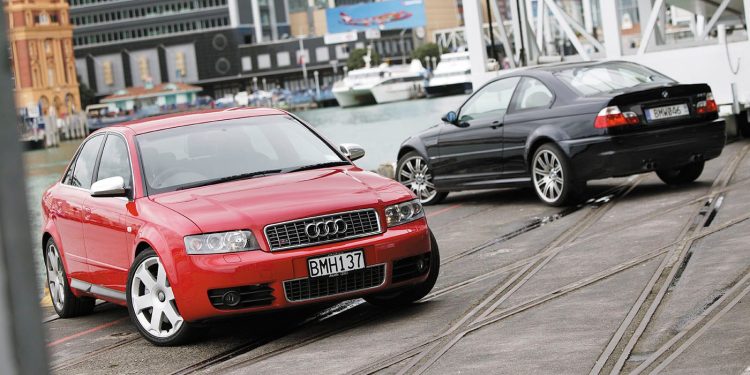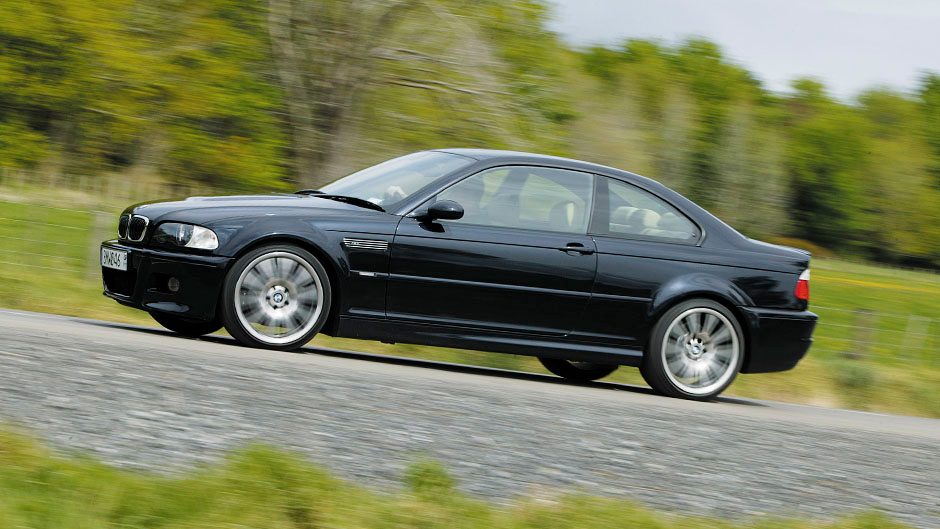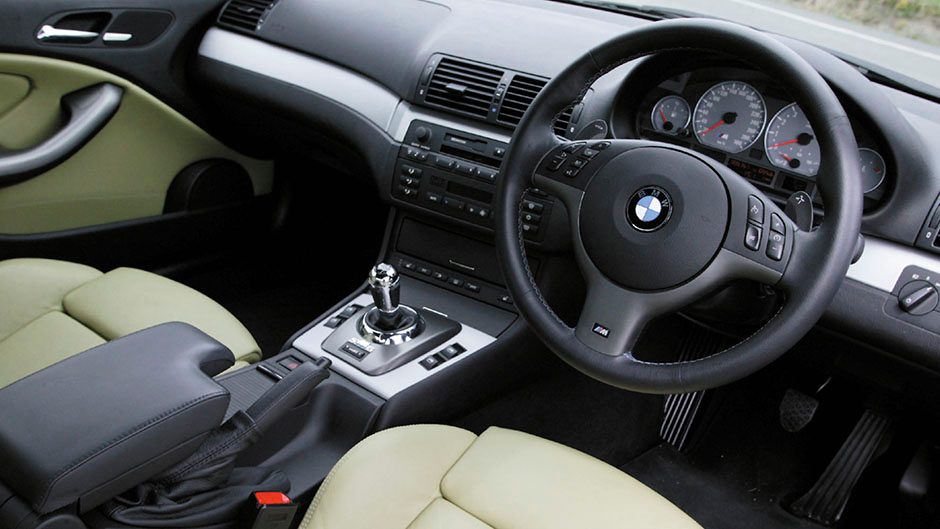2003 Audi S4 vs 2001 BMW M3 comparison
Words Paul Owen | Photos Tom Gasnier
Forget the sexual practices of the marquis de sade, here are a couple of sports variants that offer far too much driver gratification to appeal to sadomasochists. Should you take Audi’s new V8-powered S4 or BMW’s proven-to-please six-cylinder M3?
Audi, you may not know, has something of an eight-cylinder heritage thanks to the efforts of its ancestral engineer, Georg Paulmann, who produced Germany’s first eight-cylinder car way back in 1926. At the time, BMW was in its automotive infancy, pumping out motorcycles but yet to produce a car, although it was gearing up to build the Austin Seven under licence. Paulmann’s 3.3 litre dohc straight-eight hauled a massive Horch luxury saloon, although his successor, Fritz Fiedler, would soon discover the packaging advantages of the Vee-format, and V8-powered Horch cars made their debut in 1933, some displacing five litres and generating the magic 100 horsepower.
Around the same time, BMW was working hard on the 2.0 litre six-powered 328 Roadster, the car that would establish the brand as a producer of fine automobiles, and become the club racer of choice upon its launch at the 1936 Olympic Games in Berlin.
Fast forward three-quarters of a century, and you’ll find Horch has become one ring of the Audi badge – a brand formed from the amalgamation of a handful of bombed-out car makers after World War Two. And from the four-ring brand comes a new S4 sports-saloon of which Georg Paulmann and Fritz Fiedler would approve. Somehow, Audi has slotted a 4.2 litre V8 under the cramped bonnet of the latest incarnation, replacing the previous 2.7 litre bi-turbo V6. Meanwhile, over in the Bavarian camp, the historic 328 has evolved into the 3 Series Coupé-based M3, a pukka six-cylinder sports car true to the racer-for-the-road concept of the original 328. It’s the historical backdrop that makes this comparison test between the new S4 and two-years-young M3 so compelling. However, for entirely personal reasons, it has another attraction. From an engine point of view, I have the pleasure of comparing my favourite V8 of the moment with my favourite six.
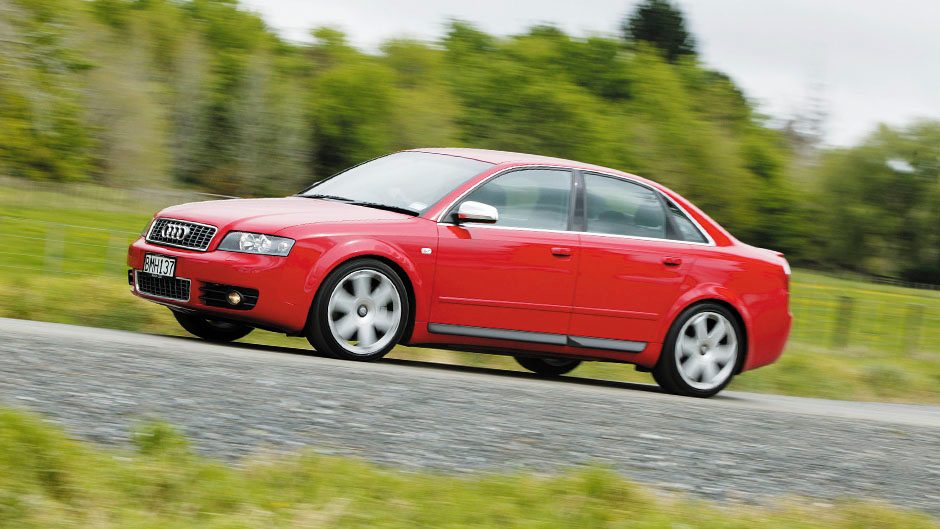
Price/Equipment
The new sports flagship of the A4 range lobs into New Zealand showrooms at a price of $139,900 for the six-speed manual version (the six-speed auto has yet to arrive). It’s a price, at a neat $4000 less, that deliberately targets the $143,900 M3 manual. The mission statement of the 4wd S4 is to offer two extra cylinders, two extra diffs, two extra driveshafts, and two extra doors, as well as a fistful of 40 $100 dollar bills – a compelling sales pitch if ever there was one. It becomes even more persuasive when comparing the S4 with the M3 that Kiwi drivers are actually buying – the two-pedal six-speed Sequential Manual Gearbox version that costs $151,900. In a perfect world we’d be comparing Audi’s $143,900 automatic S4 with this M3, and talking about the $8000 price premium charged by BMWNZ for the latter car; however, the late arrival of the two-pedal S4 and the non-existence of an M3 manual made it impossible to level the transmission playing field. But take heart, Beemer-philes, for the SMG is a ‘robotised’ manual, and doesn’t waste performance like the torque converter-equipped automatics with which we’re so enamoured.
While the transmissions may differ in their clutch operation (DIY in the Audi, electromechanical in the BMW), these are equal cars when it comes to fitted equipment. The S4 contains leather-clad Recaro seats, six airbags, a Blaupunkt ‘Symphony’ in-dash six-CD stacker, dual-climate control, and all manner of stability and braking aids. There’s also an upgrade for the bits that connect the car with the road, the S4 sporting 18” alloys dressed with 40-series tyres of a suitably sporty compound. Brakes also match the S4’s increased performance over the rest of the A4 range, with 340mm front discs mated with 300mm rears. The equipment enhancements for the S4 over the cooking A4s bring the Audi directly into competition with the similarly equipped M3. Main difference? You load your CDs into the Audi’s dash-mounted stacker, instead of the M3’s boot-mounted CD player.
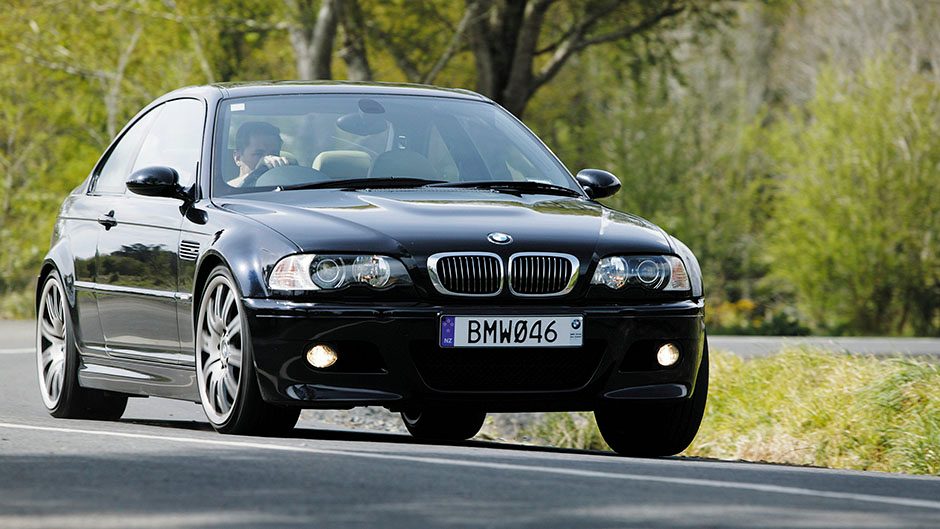
Design Engineering
The design of both these sports variants is derivative of the more mainstream model ranges that spawned them, and you won’t find the individuality that denotes cars like the 350Z or Porsche 911 in either. It’s perhaps a pity that Audi and BMW both played it so straight with the A4 and 3 Series Coupé bodies that these cars wear. And although both are of a similar age in terms of their design bases, the interior of the BMW has weathered the years better than the Audi’s, which can’t match the cleaner design and more appealing ambience of its admittedly more expensive A8 sibling. That said, the design of neither car would offend. In terms of the body-kits that identify them from their mass-market origins, discretion is the buzz-word. The wheels might be XL-sized, but the bumper alterations and added spoilers are models of restraint, as are the understated interiors. There’s no bordello-like red leather on display here.
Better then to marvel at the engineering. Audi’s packaging challenge when squeezing the V8 into the A4 engine bay was a huge one, given the long-stroke 90-degree architecture of the beast. A hard task, perhaps, but the payback in terms of increases in power and torque has been huge. Where the previous turbo V6 made 195kW at 5800rpm and 400Nm at 1850, the normally aspirated V8 amps up the peak power to 253kW at 7000rpm, and retains the grunt with 410Nm at 3500. A two-stage variable-length inlet manifold ensures there’s at least 300Nm of twist available at basement engine speeds, while the five valves (three inlet and two exhaust) aerating each cylinder encourage plenty of gas flow at high rpm. The result is a power delivery that is omnipotent right from idle to redline.
BMW’s 3.2 litre six-cylinder engine is no less impressive, especially as it makes just one less kilowatt of peak power despite a cubic capacity handicap in the region of 25 per cent, and two fewer cylinders. The award-winning 3.2 achieves this specific output advantage by relying on technology normally reserved for Formula One forays. Like the V10 that powers the single-seaters raced by the other Schumacher and Montoya, there’s an individual throttle butterfly stoking each cylinder, overseen by an engine management system with enough computer power to pilot a 747 automatically. Where the capacity deficit to the S4 shows is torque output. With the M3’s oversquare cylinder dimensions promoting top-end power, the addition of variable-valve timing to both the BMW’s camshafts can’t compete with the Audi’s torque-enhancing undersquare cylinder architecture in a bigger engine; with 365Nm produced at a heady 4900rpm, the BMW is unable to match the Audi for bottom-end grunt. Correspondingly, the Audi can’t match the BMW for weight management, the bigger engine and all-wheel-drive powertrain ensuring that the S4 weighs 180kg more.
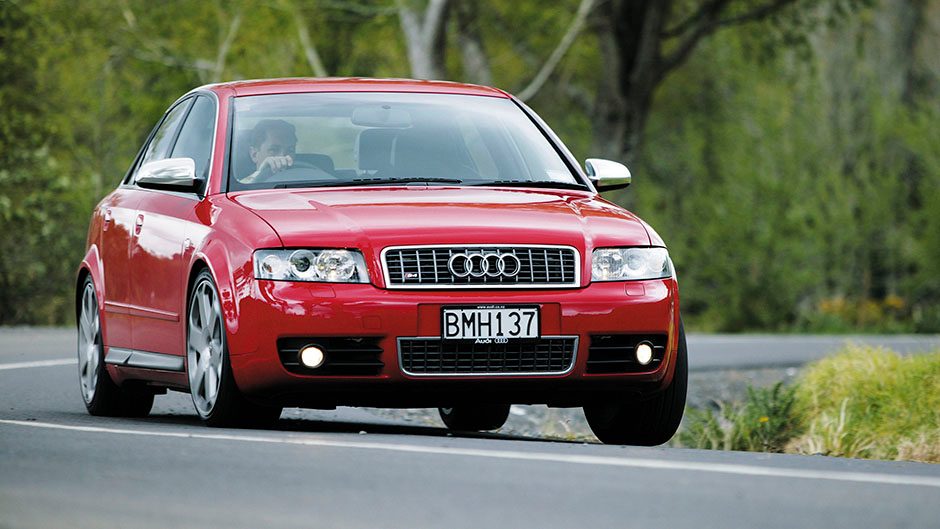
Performance
With the peak power of both cars on a par, it’s that difference in mass that makes all the difference in performance. The S4 fought hard, emulating the times of the silver M3 SMG tested in the August, 2002, issue, but it seems M3s don’t get older, they get faster. The black/blue M3 tested this time round proved to be a better performer than the silver surfer, cutting the 0-100km/h time by 0.3 of a second, and taking a tenth off the 80-120 overtaking time. In the brake test, the M3 completed its rout of the performance comparison by stopping nearly three metres earlier than the heavier S4.
However, while the VBOX brings a level of objectivity to the performance comparison that can’t be disputed, subjective impressions from the driver’s seat can fool you into thinking that the S4 is the quicker car. It’s the sledgehammer torque and lightning-quick throttle response that encourage such false impressions, along with the more baritone engine note of a high-performance V8 at full song. As with the RS4 twin-turbo V8, you feel like you’ve just been hit in the chest with a large copy of the Koran every time you give the right pedal a good stomp. And it’s the accessibility to the S4’s WRX STi-like performance that makes it such a good drive. Unlike with either M3 or STi, you don’t have to work the engine as hard to go fast.
This instantaneous throttle response makes the S4 less fussy of gear choice as you reel in the next corner or pull out to overtake something. Not that changing down two or three cogs in the M3 is any hardship with the SMG. You simply pull on the left-side paddle as many times as necessary, and you’re in the 4500+rpm zone where the car performs best. Audi’s six-speed manual is almost as easy to use, with its well-oiled lever action and near-perfect pedal positioning. Such is the torque of this V8 grunt-meister that you can skip gears on the upshifts with the knowledge that the engine will have no trouble bridging the extended gap of a third-to-fifth or second-to-fourth leap.
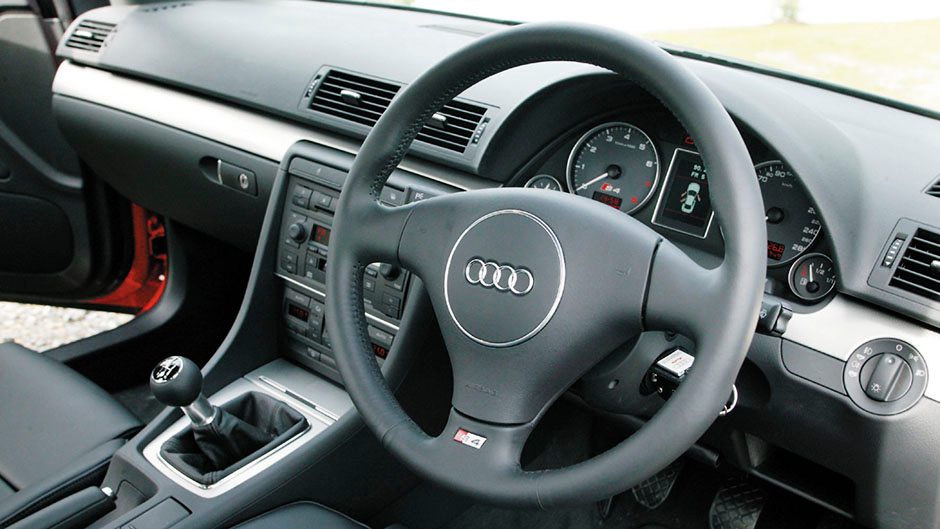
Driving Dynamics
Not only is the S4’s powertrain performance more accessible, it’s also a less demanding car to chuck around. Its suspension is suppler than the M3’s, and has more wheel travel to help keep the tyres in contact with New Zealand’s lumpier roads. No doubt the M3 would record a quicker lap time if this comparison were held on the Nurburgring; its more race-oriented suspension tune would suit the smooth surfaces encountered in western Europe, and its lower mass is less taxing to accelerate and stop, and quicker to change direction. However, we don’t drive on the Nurburgring in this neck of the woods, and instead have a road system that is under-funded and ill maintained. As long as central government leaves it up to local rate-payers to pay for the maintenance of our back roads, cars like the deliciously supple S4 will hold an advantage over more uncompromising rivals like the M3.
BMW’s firmer set-up becomes more of issue when exploring the outer edges of the chassis than when tootling around town. The M3 driver has to be prepared to catch the car as it ricochets off bumps and other surface irregularities, and this demands focused concentration and quick reflexes. Fortunately, the agile and relatively communicative steering aids this demanding task, along with the traction enhancement of M3’s trick torque-sensing rear diff.
A hard drive of both cars over a typical Kiwi back road will see the M3 pilot arriving drained and sweaty, and the S4 driver greeting him/her looking cool and relaxed. With the grip of all-wheel drive, better bump management, and responsive steering that belies how much weight this car carries over its nose, the S4 makes the driver appear a god. Even at mad-as pace, there’s little cause for the Audi’s ESP system to intervene. In the M3, it’s the driver that makes the car appear a god – a subtle yet crucial difference.
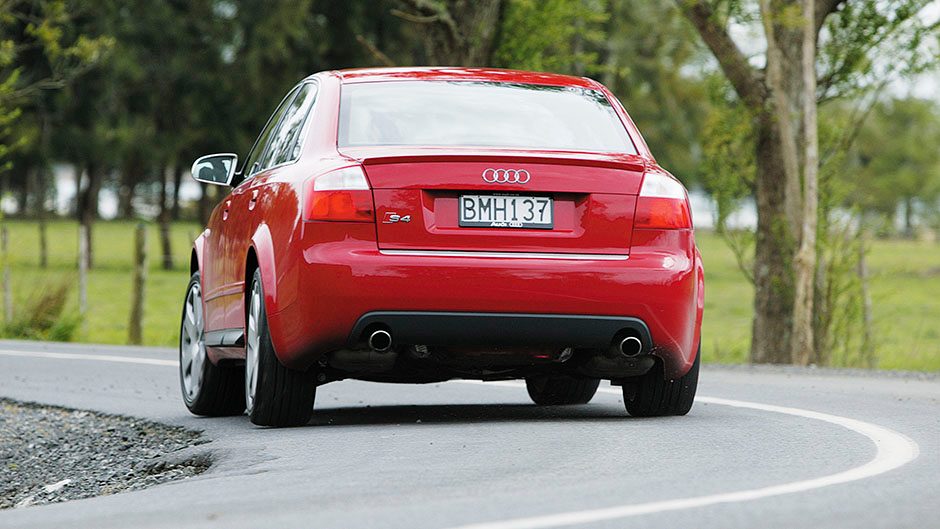
Comfort/Convenience
In a contest between two sports variants, one of a sedan/wagon range and one descended from a two-door Coupé, it’s no surprise that the former wins this section. The four-door Audi offers more of everything from the B-pillar backward: more space, more comfort, and easier access and egress. Factor in the S4’s more cosseting ride and slightly better ergonomics, and it’s no contest. That said, the M3 delivers enough comfort and convenience to qualify as acceptable everyday transport for the two people sitting up front, and as an occasional ride for those who can duck under the limited headroom in the back. The Beemer’s boot is also bigger than the Coupé norm.
| Model | 2003 Audi S4 | Price | $139,900 |
| Engine | 4163cc, V8, DI, 253kW/510Nm | Drivetrain | 6-speed manual, all-wheel drive |
| Fuel Use | 13.3L/100km | C02 Output | Xg/km |
| 0-100km/h | 5.68sec | Weight | 1703kg |
| Model | 2001 BMW M3 | Price | $151,900 |
| Engine | 3246cc, IL6, DI, 252kW/365Nm | Drivetrain | 6-speed robo manual, rear-wheel drive |
| Fuel Use | 11.9L/100km | C02 Output | Xg/km |
| 0-100km/h | 5.34sec | Weight | 1524kg |


